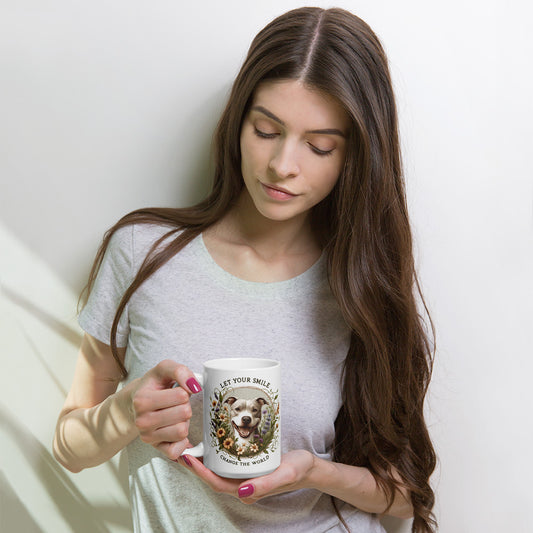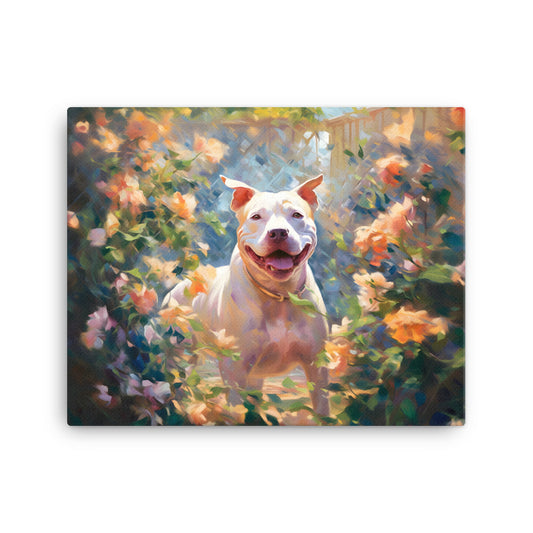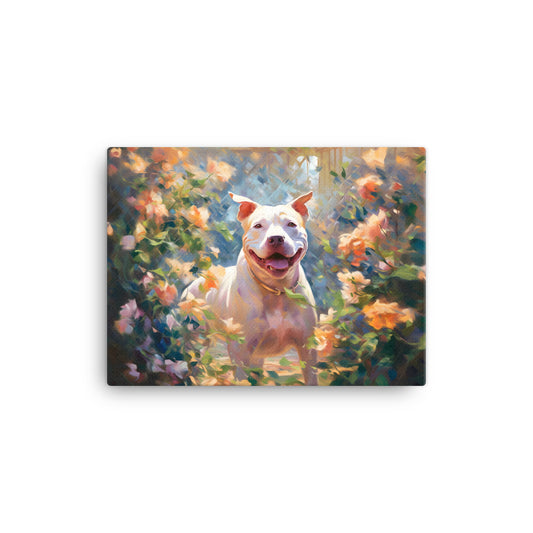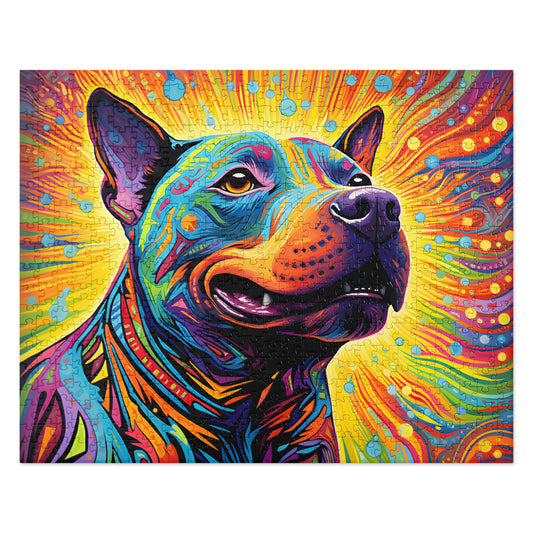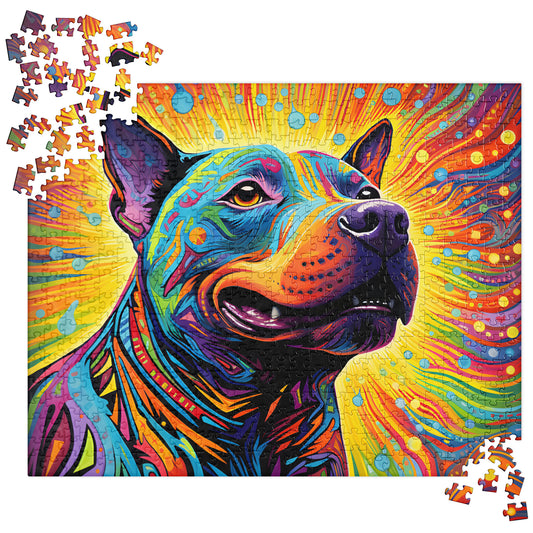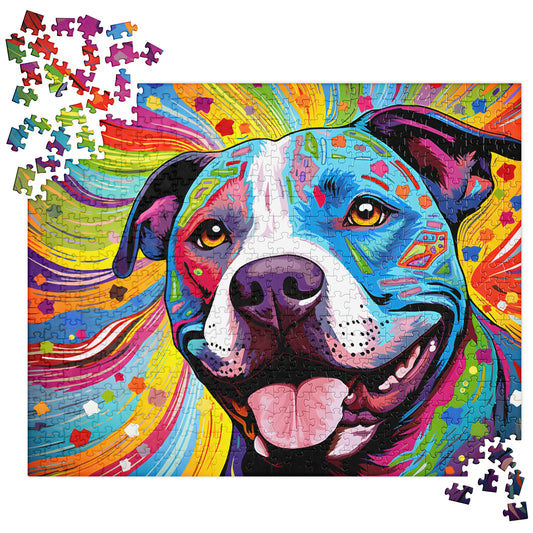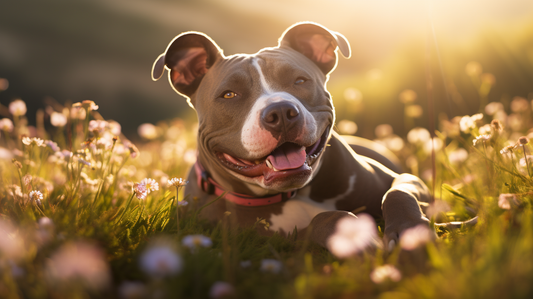- Pittie Choy
- Pit bulls Advocacy & Education
- Understanding the Science Behind Pit Bulls' Smiling Faces
Understanding the Science Behind Pit Bulls' Smiling Faces
Tom Drachman
Introduction
Pit bulls have become known for their unique and endearing trait of always appearing to be smiling. This phenomenon has captured the hearts of many dog lovers around the world, and has become a defining characteristic of the breed. But have you ever wondered why pit bulls always seem to be wearing a smile on their face? In this post, we'll explore the history behind this beloved feature of pit bulls and uncover the truth behind their happy demeanor.
At Pittie Choy, we value our pit bull community and seek to provide education and understanding about these wonderful dogs. Our goal with this post is to shed light on the smiling phenomenon and share the fascinating history of pit bulls. As a brand, we aim to celebrate and advocate for the breed, and we hope this post will further showcase the many positive qualities that make pit bulls so special. So let's dive in and discover the reasons behind why pit bulls are always smiling.
Table of Contents
The Science Behind the "Smiling" Faces
Pit bulls are well-known for their "smiling" faces, which can make them look happy and approachable. But have you ever wondered why pit bulls have this distinctive facial expression? The answer lies in the anatomy of their faces and the unique arrangement of their facial muscles.
Pit bulls, like all dogs, have a complex system of muscles in their faces that allow them to make a wide range of expressions. However, some of the muscles in a pit bull's face are arranged in a way that creates the appearance of a smile.
One of the key muscles involved in the "smiling" phenomenon is the zygomaticus major, which runs from the cheekbone to the corner of the mouth. In pit bulls, this muscle is relatively large and well-developed, which can cause the corners of their mouths to turn up, even when they are not actually happy or excited.
Other breeds, such as the Boxer and the American Staffordshire Terrier, also have similar facial expressions due to their facial muscle structure. However, pit bulls are perhaps the most well-known for their "smiling" faces, which has helped to contribute to their reputation as friendly and approachable dogs.
So, next time you see a pit bull with a big grin on their face, remember that it's not necessarily an indication of their mood – it's just the way their facial muscles are arranged. And regardless of whether they are smiling or not, pit bulls are beloved members of many families and communities, and deserve to be treated with love and respect.
The Emotional Intelligence of Pit Bulls
Pit bulls are known for their ability to form strong emotional connections with their owners. They are highly attuned to human emotions and have a natural ability to sense and respond to their owner's moods. This emotional intelligence is one of the many reasons why pit bulls are such beloved family pets.
Studies have shown that pit bulls, like many other breeds, have the ability to read human emotions through facial expressions and body language. They can distinguish between positive and negative emotions and respond accordingly. This means that they are not only great at comforting their owners in times of stress but can also provide emotional support to people in need.
One of the most remarkable things about pit bulls is the emotional connection they form with their owners. They are loyal and loving pets that are often referred to as "nanny dogs" because of their ability to watch over and protect children. Many pit bull owners report feeling an intense emotional bond with their pets, one that is often compared to the bond between a parent and child.
The "smiling" face of a pit bull is just one example of how these dogs express their emotions. A pit bull's facial expression can convey a wide range of emotions, from joy and excitement to contentment and relaxation. When a pit bull is happy, their face can light up with a big, wide smile, showing off their impressive set of teeth.
The Importance of Understanding Pit Bull Body Language
Pit bulls are highly expressive dogs that use a variety of body language signals to communicate their emotional state and intentions. Unfortunately, misinterpretation of these signals can lead to misunderstandings and even result in negative stereotypes. This is why it's important to understand pit bull body language, not just for our own safety but for the well-being of these amazing dogs.
Body language is a primary means of communication for pit bulls and understanding it can help us better communicate with them. By paying attention to the subtle cues of their body language, we can gain insights into how they are feeling, what they need, and how we can best interact with them.
Interpreting pit bull body language can also help prevent misunderstandings and improve interactions between humans and pit bulls. For example, when a pit bull is wagging its tail, it doesn't necessarily mean that the dog is happy. In fact, a wagging tail can indicate a range of emotions, including fear or aggression. Understanding the nuances of pit bull body language can help us differentiate between a wagging tail that signals friendliness and one that signals caution or discomfort.
Here are some tips for interpreting pit bull body language:
- Pay attention to the dog's overall body posture. A relaxed and open posture typically indicates a happy and friendly dog, while a stiff and tense posture may indicate discomfort or aggression.
- Observe the position of the ears. When a pit bull's ears are relaxed and facing forward, it generally indicates a calm and happy dog. Conversely, when the ears are pulled back or flattened against the head, it may indicate fear or aggression.
- Watch for changes in facial expression. Just like humans, pit bulls can convey a range of emotions through their facial expressions. A relaxed and open mouth is usually a good sign, while a wrinkled or snarling face may indicate aggression or discomfort.
- Pay attention to their tail: A pit bull's tail can indicate their mood and intentions. A tail held high and wagging slowly can indicate happiness, while a tucked tail can indicate fear or discomfort. A stiff, upright tail can be a sign of aggression or excitement.
- Watch their ears: A pit bull's ears can also be a clue to their emotional state. When their ears are relaxed and pointed forward, they are likely interested and curious. If their ears are pulled back against their head, they may be anxious or fearful.
By understanding pit bull body language, we can communicate more effectively with these wonderful dogs and build stronger relationships with them. At Pittie Choy, we believe in promoting a positive image of pit bulls and educating people about their true nature and potential. Let's work together to break down negative stereotypes and show the world the amazing personalities and loving hearts of pit bulls.
The Stigma Surrounding Pit Bulls:
Pit bulls have been the subject of negative stereotypes for decades, leading to a stigma that can be difficult to overcome. Some people believe that pit bulls are inherently aggressive and dangerous, while others associate them with criminal activity. This has led to breed-specific legislation that can make it difficult for pit bull owners to find housing or obtain insurance.
Despite these challenges, pit bull owners and advocates are working hard to change the narrative and show the world the truth about these wonderful dogs. One way in which pit bulls are fighting back against stereotypes is through their "smiling" faces.
Because of their unique facial structure and muscle development, pit bulls often appear to be smiling. This can help to dispel the notion that they are constantly aggressive and mean. In fact, pit bulls are known for their loyalty and love for their owners, and many of them make wonderful family pets.
It's important for people to understand that pit bulls, like all dogs, are individuals and should not be judged based on their breed. By learning about their body language, including the "smiling" face, people can better understand pit bulls and prevent misunderstandings.
Advocacy efforts are also important in fighting against breed-specific legislation and other forms of discrimination. By promoting positive pit bull stories and educating the public about the truth behind the breed, we can help to break down negative stereotypes and give these dogs the chance they deserve.
In conclusion, pit bulls are often misunderstood and stigmatized, despite their many positive qualities. Their smiling faces are just one example of their unique and endearing characteristics. By understanding the science behind their expressions, their emotional intelligence, and their body language, we can better communicate and connect with these amazing dogs.
It is up to all of us to combat negative stereotypes and advocate for pit bulls. Whether it's through educating ourselves and others, volunteering with rescue organizations, or simply being a responsible and compassionate pit bull owner, we can all make a difference.
At Pittie Choy, we value and celebrate pit bulls for who they are, and we encourage our readers to do the same. Let's work together to break down barriers and promote understanding and acceptance of these incredible dogs.


